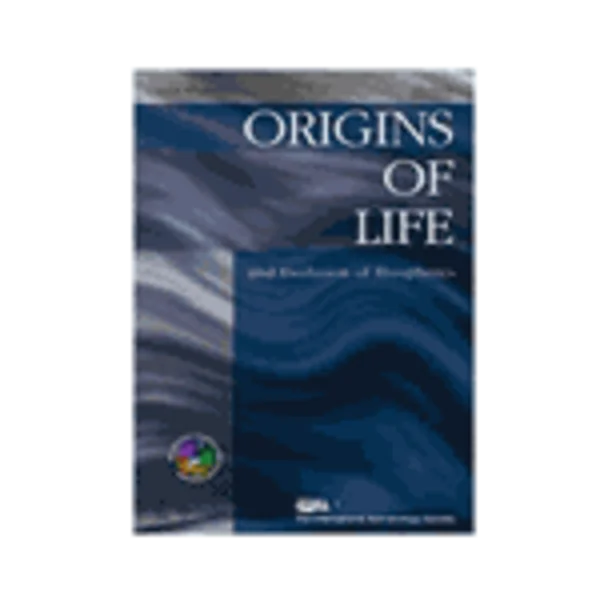-
phenomenon of quantum entanglement in a system composed of two minimal protocells
جزئیات بیشتر مقاله- تاریخ ارائه: 1392/07/24
- تاریخ انتشار در تی پی بین: 1392/07/24
- تعداد بازدید: 1091
- تعداد پرسش و پاسخ ها: 0
- شماره تماس دبیرخانه رویداد: -
the quantum mechanical self-assembly of two separate photoactive supramolecular systems with different photosynthetic centers was investigated by means of density functional theory methods. quantum entangled energy transitions from one subsystem to the other and the assembly of logically controlled artificial minimal protocells were modeled. the systems studied were based on different photoactive sensitizer molecules covalently bonded to a non-canonical oxo-guanine::cytosine supramolecule with the precursor of a fatty acid (pfa) molecule attached via van der waals forces, all surrounded by water molecules. the electron correlation interactions responsible for the weak hydrogen and van der waals chemical bonds increased due to the addition of polar water solvent molecules. the distances between the separated sensitizer, nucleotide, pfa, and water molecules are comparable to van der waals and hydrogen bonding radii. as a result, the overall system becomes compressed, resulting in photo-excited electron tunneling from the sensitizer (bis(4-diphenylamine-2-phenyl)-squarine or 1,4-bis(n,n-dimethylamino)naphthalene) to the pfa molecules. absorption spectra as well as electron transfer trajectories associated with the different excited states were calculated using time dependent density functional theory methods. the results allow separation of the quantum entangled photosynthetic transitions within the same minimal protocell and with the neighboring minimal protocell. the transferred electron is used to cleave a “waste” organic molecule resulting in the formation of the desired product. a two variable, quantum entangled and logic gate was proposed, consisting of two input photoactive sensitizer molecules and one output (pfa molecule). it is proposed that a similar process might be applied for the destruction of tumor cancer cells or to yield building blocks in artificial cells.
مقالات جدیدترین رویدادها
-
استفاده از تحلیل اهمیت-عملکرد در ارائه الگوی مدیریت خلاقیت سازمانی و ارائه راهکار جهت بهبود
-
بررسی تاثیر ارزش وجوه نقد مازاد بر ساختار سرمایه شرکت های پذیرفته شده در بورس اوراق بهادار تهران
-
بررسی تأثیر سطح افشای ریسک بر قرارداد بدهی شرکت های پذیرفته شده در بورس اوراق بهادار تهران
-
بررسی تأثیر رتبه بندی اعتباری مبتنی بر مدل امتیاز بازار نوظهور بر نقد شوندگی سهام با تأکید بر خصوصی سازی شرکت ها
-
تأثیر آمیخته بازاریابی پوشاک ایرانی بر تصویر ذهنی مشتری پوشاک ایرانی (هاکوپیان)
-
نقش هوش رقابتی در کسب مزیت رقابتی
-
مطالعه آسیب شناسانه میزان رعایت اصول پدافند غیرعامل در برابر خطرات ناشی از زلزله در معماری ساختمان صدا و سیمای مرکز بوشهر
-
مشخصات پروفیل جریان فوق بحرانی بر روی سرریزهای جانبی مستطیلی
-
بررسی تاثیر تقلید حرکتی غیرگفتاری بر توانایی نامیدن در کودکان مبتلا به درخودماندگی (اوتیسم)
-
بررسی نقش سرمایه فکری در کسب مزیت های رقابتی در سازمان تأمین اجتماعی
مقالات جدیدترین ژورنال ها
-
مدیریت و بررسی افسردگی دانش آموزان دختر مقطع متوسطه دوم در دروان کرونا در شهرستان دزفول
-
مدیریت و بررسی خرد سیاسی در اندیشه ی فردوسی در ادب ایران
-
واکاوی و مدیریت توصیفی قلمدان(جاکلیدی)ضریح در موزه آستان قدس رضوی
-
بررسی تاثیر خلاقیت، دانش و انگیزه کارکنان بر پیشنهادات نوآورانه کارکنان ( مورد مطالعه: هتل های 3 و 4 ستاره استان کرمان)
-
بررسی تاثیر کیفیت سیستم های اطلاعاتی بر تصمیم گیری موفق در شرکتهای تولیدی استان اصفهان (مورد مطالعه: مدیران شرکتهای تولیدی استان اصفهان)
-
بررسی و تحلیل نقش اشتیاق و انگیزش تحصیلی در پیشرفت دانش آموزان
-
بررسی ارتباط میان ارائه ی اطلاعات شرکت در شبکه اجتماعی، حاکمیت شرکتی و رانت خواهی در جبران خسارت مدیرعامل در شرکت های پذیرفته شده در بورس اوراق بهادار تهران
-
بررسی اثر آموزش ضمن خدمت بر چابکی سازمان با میانجی گری انگیزش ( مطالعه موردی در بخش نفت و گاز و پتروشیمی شرکت مهندسی قدس نیرو )
-
شناسایی عوامل موثر بر فناوری اطلاعات با رویکرد اقتصاد مقاومتی در صنعت نفت و گاز
-
the relationship between quality of work life and employee motivation in the city of gonbad welfare organization




سوال خود را در مورد این مقاله مطرح نمایید :